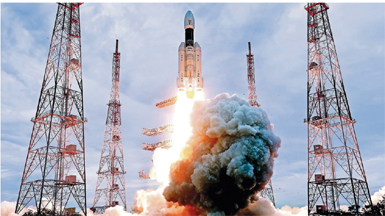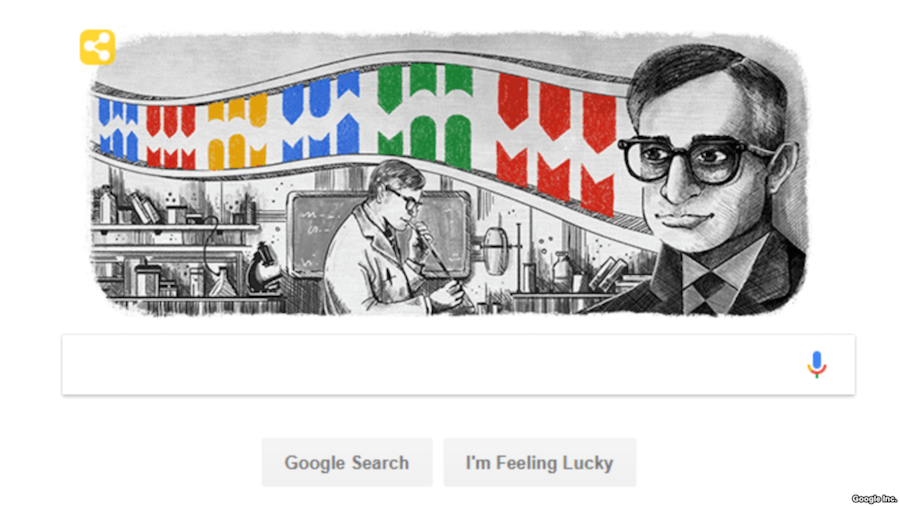
From being an education hub of the world in ancient times to becoming the IT hub of the world today, the Indian landscape has come a long way. Taking 15th August 1947 as our frame of reference, we find that there are several fields like science and technology, economy, and human development where India has shown remarkable progress. However, some fields like health and education still seem to be taken care of. Let us look at these aspects of Indian development individually.
Science and Technology
When the Britishers left India, they left behind a broken, needy, underdeveloped, and economically unstable country. After independence, India prioritized scientific research in its first five-year plan. It paved the way for prestigious scientific institutes like IITs and IISC. After just three years of independence, the Indian Institute of Technology has established in 1950. These institutions promoted research in India with the aid of foreign institutions. From launching its first satellite Aryabhatta in 1975 to being the first country to reach the orbit of Mars, India has taken confident strides in the field of space research technology, thanks to the Indian Space Research Organisation (ISRO). We can proudly state that India is standing on a par with countries like USA and China, same goes with the field of biotechnology also where India is producing vaccines for the entire world. The success of UPI is also a case study for the world with 9.36 billion transactions worth Rs. 10.2 trillion in Q1 of 2022 only.
Achievements
1951: The first Five Year Plan draft has a dedicated chapter on “Scientific and Industrial Research”.
1953-54: Samarendra Kumar Mitra builds India’s first indigenous electronic analogue computer at the Indian Statistical Institute, Calcutta.
1954: First particle accelerator cyclotron becomes operational. Astrophysicist Meghnad Saha and later nuclear physicist B.D. Nagchaudhuri led the team that built it at the University of Calcutta.
1954: Homi J. Bhabha sets up the Atomic Energy Establishment, Trombay. It was named the Bhabha Atomic Research Centre after his death. The Department of Atomic Energy comes into being through a presidential order.
1958: Parliament formulates and adopts the Scientific Policy Resolution. It embodied Jawaharlal Nehru’s vision of India as a welfare state where social transformation was possible only through investment in science and technology.
1959: The Tata Institute of Fundamental Research, Bombay, builds India’s first digital computer called TIFRAC (TIFR Automatic Computer).
1960: The CFTRI develops the first baby milk food from buffalo milk (Amul) after multinationals refused to set up a manufacturing facility in India because the country was short of cow milk and buffalo milk was not suitable as it had too much fat.
1962: Nehru establishes Indian National Committee for Space Research under the DAE. It was renamed Indian Space Research Organisation (ISRO) in 1969.
1963: G.N. Ramachandran, along with his colleagues C. Ramakrishnan and V. Sasisekharan, develop what is today called the “Ramachandran plot”, a tool used universally in the field of protein conformation.
1963: Vikram Sarabhai establishes India’s first rocket launching station at Thumba near Thiruvananthapuram.
1964: Under the aegis of TIFR, cosmic ray experiments begin at abandoned mines at Kolar Gold Fields at a depth of 2.3 km. KGF is credited with the discovery of atmospheric neutrinos.
1965: Mathematicians M.S. Narasimhan and C.S. Seshadri from TIFR prove the Narasimhan-Seshadri Theorem. Perhaps the most significant mathematical result to come out of post-Independence India.
1968: The Green Revolution is launched under the premiership of Lal Bahadur Shastri, led by M.S. Swaminathan with the political support of Agriculture Minister C. Subramaniam.
1970: A team led by Govind Swarup of TIFR builds the Ooty Radio Telescope. Uniquely, the telescope sits on a natural slope of 11 degrees, which matches the latitude of the location, allowing it to track celestial sources for up to 10 hours in the east-west direction.
1974: Pokhran-1, India’s first nuclear test, is conducted on May 18.
1975: On April 19, “Aryabhata”, India’s first indigenously designed and built satellite, launched. On August 1, the Satellite Instructional Television Experiment, one of the largest of its kind anywhere, starts. The aim: use of satellite technology to telecast educational programmes.
1978: India’s first, and the world’s second, test-tube baby, “Durga”, born in Calcutta on October 3.
1983: Prime Minister Indira Gandhi unveils government’s Technology Policy Statement at a session of the Indian Science Congress in Tirupati, Andhra Pradesh, in January.
1983: The Integrated Guided Missile Programme starts on July 26 under the leadership of A.P.J. Abdul Kalam, Director, DRDL. Prithvi, Trishul, Akash, Nag and Agni are the result.
1983: India establishes its scientific base station (Dakshin Gangotri) in Antarctica, about 2,500 km from the South Pole, for research in oceanography, geology, glaciology, geomagnetism, and environmental sciences. In 1988, this was abandoned and a new station, Maitri, also India’s first permanent station, was set up 90 km from the first one.
1984: Centre for Development of Telematics is set up under Sam Pitroda with scientists and engineers from TIFR and the Telecom Research Centre of the DoT. Its mandate: develop a telephone digital switching system based on what had been developed for the Army. The result: first Rural Automatic Exchange in 1985.
1985: The Indian Railways reservation system IMPRESS (Integrated Multi-train Passenger Reservation System) launched in New Delhi on October 15.
1986: India’s first parallel computing supercomputer, Flosolver, built at the National Aeronautics Laboratory becomes operational in December.
1988: The Centre for Cellular and Molecular Biology develops DNA fingerprinting technology. India becomes third country to develop the technology.
1989: Standardisation of the design of the 220 MWe Indian Pressurised Heavy Water Reactor.
1994: The radio astronomer Govind Swarup of TIFR completes his Giant Metrewave Radio Telescope at Narayangaon, near Pune. It pioneered new techniques in antenna design and is one of the largest and most sensitive low frequency range radio telescopes in the world.
1997: Shantha Biotechnics, a private company based in Hyderabad, launches India’s first recombinant health product, a hepatitis B vaccine called Shanvac-B.
1999: India’s first synchrotron radiation source, Indus-1, with a beam energy of 450 MeV, becomes operational at the DAE’s Raja Ramanna Centre for Advanced Technology, Indore, Madhya Pradesh. Indus-2, with a beam energy ramped up to 2.5 GeV, becomes operational in 2005.
2000–01: The Indian Astronomical Observatory (IAO), built and operated by the Indian Institute of Astrophysics, Bengaluru, in Hanle near Leh in Ladakh, is inaugurated in June.
2001: The maiden flight of Tejas, the indigenously designed and built light combat aircraft, on January 4. Designed by DRDO’s Aeronautical Development Agency and built by Hindustan Aeronautics Ltd, Tejas has now been inducted into the Air Force and the Navy.
2002: On August 6, computer scientist Manindra Agrawal and his students Neeraj Kayal and Nitin Saxena at IIT Kanpur published a first-ever algorithm to determine (in finite time) whether any given number is prime or composite in a provably deterministic manner. In 2006, the authors receive both the Gödel Prize and Fulkerson Prize for their work.
2008: ISRO launches India’s first mission to the moon on October 22.
2009: Launch of the first of the Arihant-class nuclear-powered ballistic missile submarines developed under the Advanced Technology Vessel project, a collaboration between DAE and DRDO that began in the 1990s. Arihant is the first ballistic missile submarine to have been built by a country other than the five permanent members of the UN Security Council.
2013: ISRO launches a spacecraft to Mars on November 5, called Mars Orbiter Mission or Mangalyaan. ISRO becomes the fourth space agency to send a spacecraft into a Martian orbit and the first one to do so on its maiden attempt.
2013–14: Development of a paediatric vaccine to prevent rotavirus infections, a leading cause of diarrhoea among children. Developed by a team of scientists under the aegis of India’s Department of Biotechnology, it was licensed for production by the Hyderabad-based Bharat Biotech under the brand name Rotavac.
2014: WHO declares India polio-free on March 27.
2015-16: After two decades of R&D, ISRO develops India’s first indigenous cryogenic engine for its launch vehicle programme.
2015–16: The detection of gravitational waves in September 2015 (announced in February 2016) and June 2016 by the US-based Laser Interferometer Gravitational Wave Observatory is made possible by the mathematical technique developed by Sanjeev Dhurandhar and B. Sathyaprakash at the Inter-University Centre for Astronomy and Astrophysics in Pune. It proves to be the most important and sensitive tool for extracting the extremely feeble gravitational wave signal from the accompanying huge amount of extraneous astronomical noise.
2020–21: Entering into collaboration with the ICMR in May 2020, Bharat Biotech develops India’s first indigenous vaccine against SARS-COV-2 called Covaxin, an inactivated virus vaccine that gets EUA on January 3, 2021.
In August 2021, ZydusCadila gets EUA for India’s first indigenous plasmid DNA vaccine, which has been deployed since February 2022.
July 30, 2023: ISRO’s PSLV-C56 puts 7 satellites in orbit; four more missions this year
Aug 6, 2023: Chandrayaan-3 Successfully inserted into Lunar Orbit





Be the first to comment